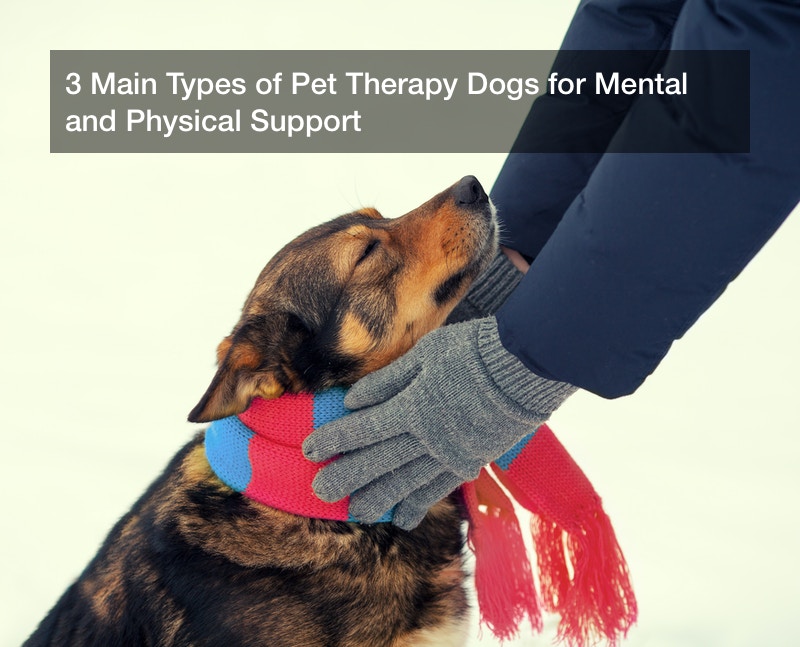
Pet therapy dogs are amazing healing companions trained to offer affection, comfort, and support to individuals suffering from physical or mental disabilities. And although all dogs have some level of natural protective instincts, some breeds are exclusively trained to have vastly superior instincts for protection. The following are 3 examples of pet therapy dogs and the sort of support they provide.
1. Therapy Dogs
Therapy dogs are essential in a person’s recovery and stress management as they offer necessary affection and comfort to people with mental, physical and emotional challenges in hospice, hospitals, nursing, and retirement homes. Pet therapy dogs are categorized in three ways:
- Therapeutic Visitation Animals
Trained to offer comfort and pleasure, especially in nursing homes, rehabilitation and detention centers, these are household pets normally used to assist people living with physical and mental health conditions. They are the most common type of pet therapy dogs and often subjected to continuous training and education to provide much-needed support in those particular settings. - Animal Assisted Therapy Animals Unlike visitation animals, typically dogs, this type of dog is used for more goal-oriented benefits such as treating cognitive and perception shortfalls. They are usually used by therapists as an alternative treatment option, particularly in hospital settings to help patients with a limited range of movement, pain, endurance, gait, and sensation.
- Facility Therapy Animals
As the name suggests, these animals are cared for and provided in home care facilities that host patients with a range of mental illnesses including dementia and Alzheimer’s, depressions, anxiety disorder, and bipolar disorder. These animals are highly trained and skilled to offer dementia care, and assist therapists to administer alternative care.
However, not just any animal can be considered for pet therapy, but only those certified. For a dog to be certified a therapy animal it has to go through vigorous temperament and skill training and current vaccinations. Facility therapy animals must also have basic discipline like composure in new environments and around strangers, and be more sociable. They are subjected to specific requirements and examinations before certification to offer therapy support.
2. Emotional Support Animals
Emotional support dogs are trained to help patients suffering from chronic mental illness. They are good for companionship in providing joy, love, and comfort as well as therapeutic support. Severe mental illnesses are so serious that they can disable someone’s ability to make the right decisions and emotional control. The most common types of emotional support animals are dogs and cats, though other animal species like mini-mares or horses can be trained as well.
Unlike therapy animals, which must be taken through specialized training to offer therapeutic support, ESA doesn’t necessarily perform any special task. However, they are still required to have basic obedience, especially around strangers. If you are considering owning an emotional support dog it’ll be prudent if to get an ESA letter that allows you to travel and even live with your dog in apartments with zero tolerance pet policies.
3. Service Dogs
When you combine the good attributes of pet therapy and emotional support dogs you get a full-fledge service dog that provides a wide array of support to a disabled person. Service dogs are trained for different types of service such as diabetic, mobility, allergy alert, medical alert, and a host of other important services. You can access any public or private facility with a service dog provided its presence doesn’t compromise with the safety measure of the facility.
Pet therapy dogs can ensure a mental, emotional or physical disabled person lead a normal life with the ability to manage stress and experience love like any normal human being.

